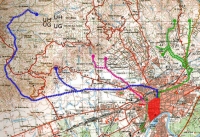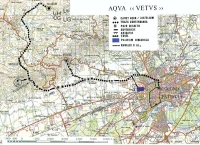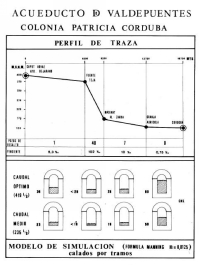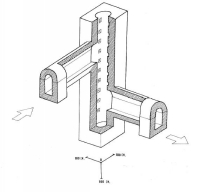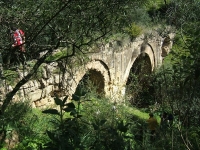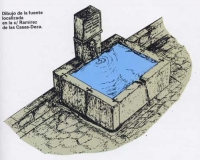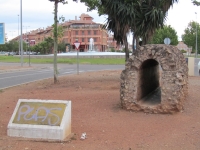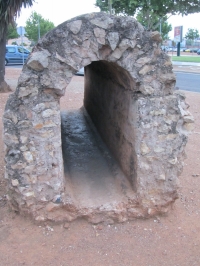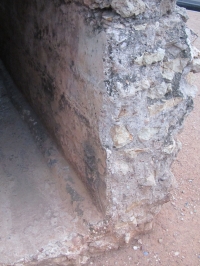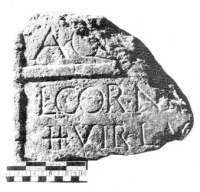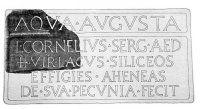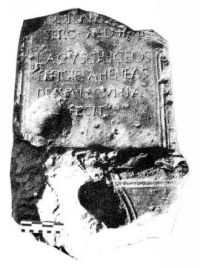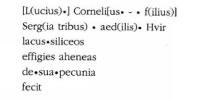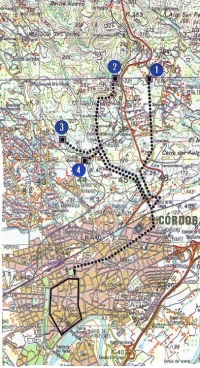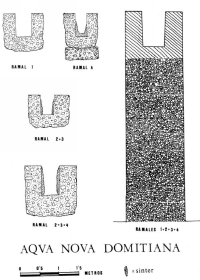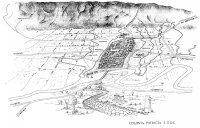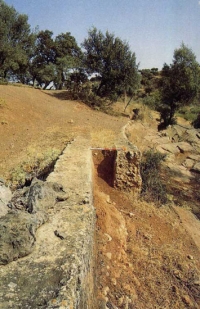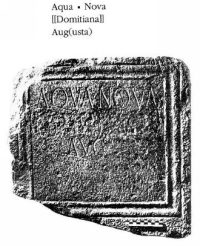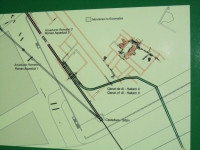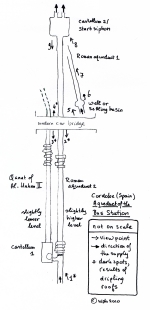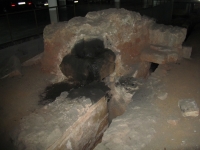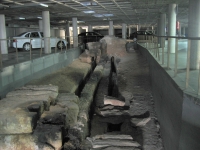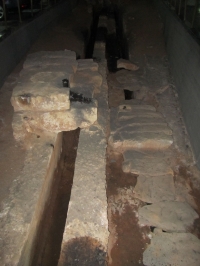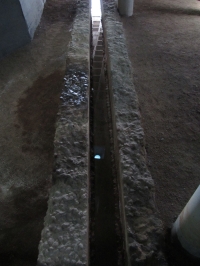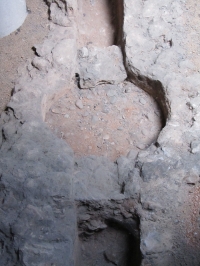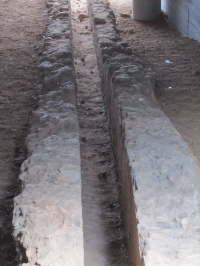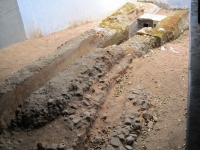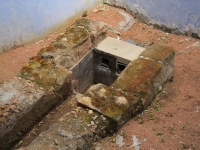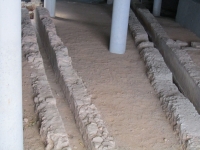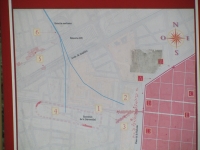The aqueduct (2nd c AD) and qanat (10th c AD) of the Bus Station
(Text from the information panel under the bus station)
Roman aqueduct and Muslim qanat
The Roman channel was built using opus caementitium (Roman concrete), a material made of medium-sized limestone rocks stuck together with lime and sand.
The Arab historian al-Dabbi (9th c) reports the existence of two fountains situated in the Western outskirts of Cordoba. One of them was called Ayn Funt Aurea, an
Arabic version of the Latin name Font Aurea (Golden Fountain). This Font Aurea could originally have been a saliens (Roman fountain or nymphaeum) situated
either in the circus or in the Western quarters of the city, and supplied by this aqueduct.
In 976 al-Hakan II decided to build a large piping system or qanat to supply the Great Mosque with water. In order to achieve this purpose, the engineers working
for the caliph discontinued the route of the old Roman aqueduct and diverted its water with a new system of pipes that went over the former siphon and a castellum
divisorium.
After the Reconquista of the city the qanat became the property of the Cathedral authorities. They started to charge the citizens for the privilege of supplying their
houses with aqueduct water. In modern times it continued to carry water to the Cathedral and the Alcázar (fortress). For this reason it became known as Water
from the Factory of the Holy Church and Cathedral.
This aqueduct has remained in use since Roman times. After building the bus station, its water was channeled so that it could continue to feed the gardens in the Alcázar.
|
